
A PLACE LOST & NO LONGER REMEMBERED
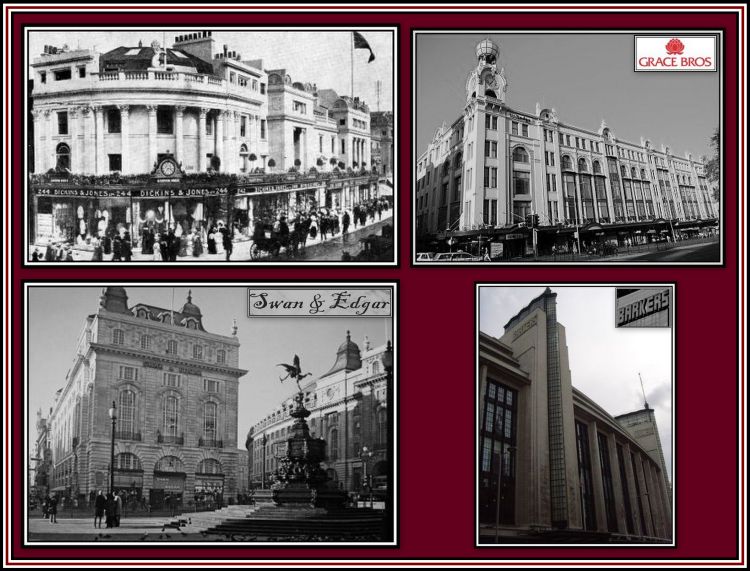 |
One time famous Department Stores |
| |
|
| |
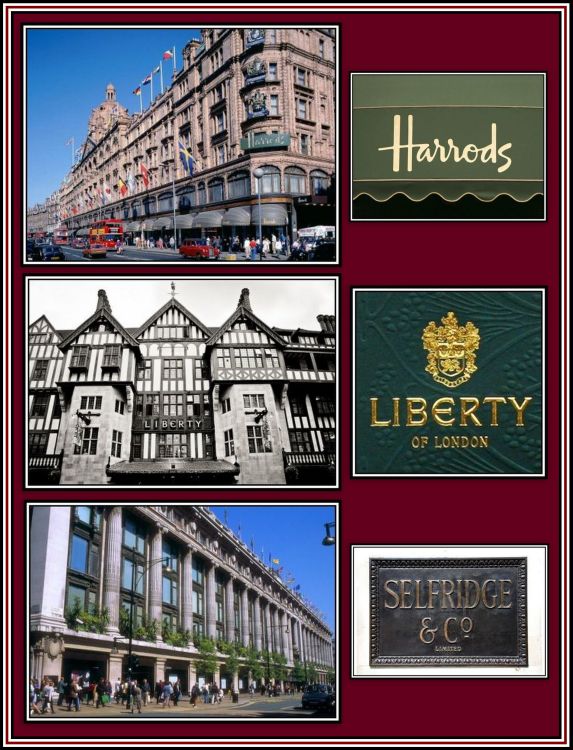 |
Three Great Stores in London |
| |
| When I lived in London, I went to secondary school in Clerkenwell, which since 1965 forms part of the Borough of Islington just north of the City of London. While there, I remember that we studied the history of Finsbury, Clerkenwell and Islington and I was surprised by its rich past. I liked this school and the area, but had not visited in many years except to go to Sadler’s Wells. As a result, I decided that it was high time that I did and so, one day during a visit later in the year, I went to look at the area and at my old school. |
| |
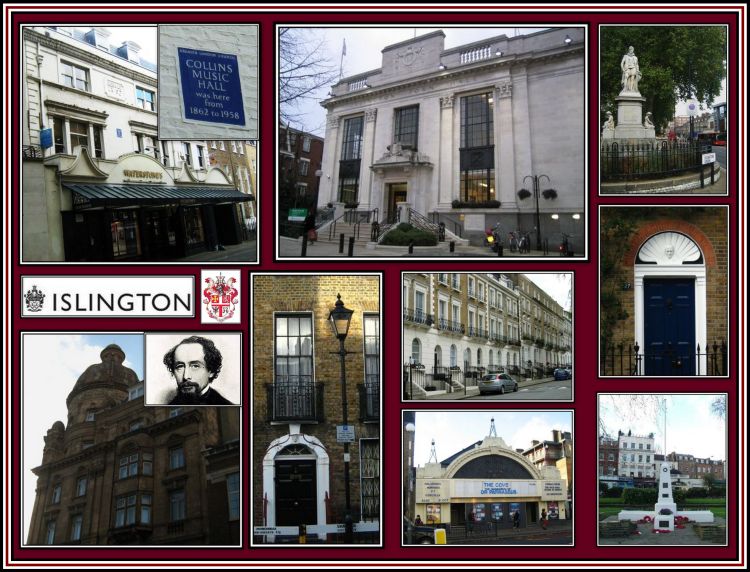 |
Around the Borough of Islington
Top row: right, Waterstone's bookshop, site of the Collins Music Hall; middle, Islington Town Hall; left, statue of Hugh Middleton
Bottom row: right, The Angel, once an inn and mentioned in several novels by Charles Dickens;
middle, The Screen on The Green cinema, left, War Memorial on the Green |
| |
| My old school was just off Bunhill Row, which is where John Milton wrote Paradise Lost. I was told that several years after I left the school, it was converted into an Infant and Junior School. Several years after, it ceased to be a school and was converted into apartments. |
| |
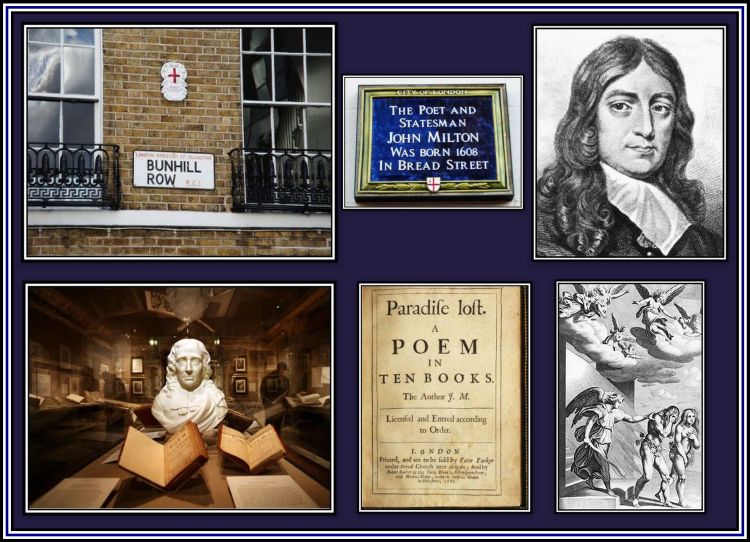 |
| |
| A short walk from my old school and on the other side of Bunhill Row is Bunhill Fields. This was once a cemetery for Non-Conformists and was of non-consecrated soil. It has been closed for new burials for many years now. A Non-Conformist was someone who did not follow the governances and usages of the Church of England, and the cemetery was open to them, as long as they had the money to be interred there. As a result, the burial site became known mockingly as the burial site of dissenters. Apparently over a thousand bodies have been buried here including those of Daniel Defoe, John Bunyan, William Blake and Isaac Watts. One thing I noticed as I walked through the Fields was that it is now much better kept than it was during my school days. Close by is the Quaker Burying Ground where seemingly thousands of Quakers were interred from 1661 onwards. |
| |
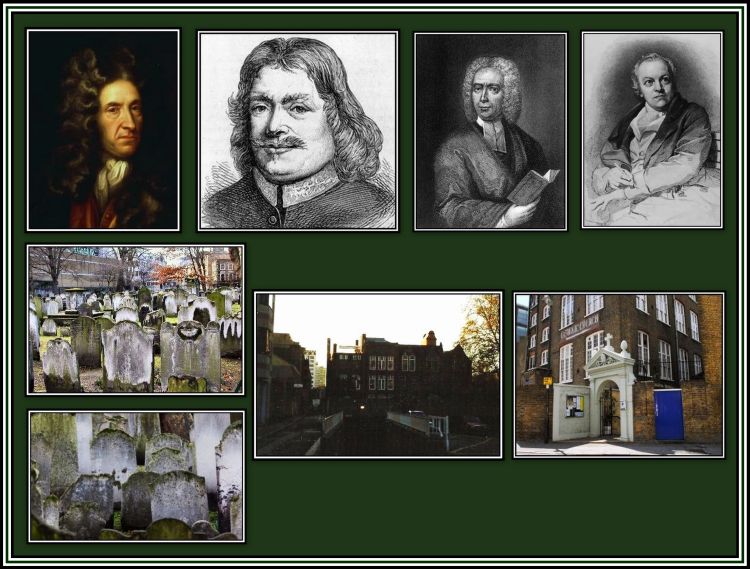 |
Bunhill Fields
Top row: left to right - Daniel Defoe, John Bunyan, Issac Watts & William Blake
Bottom Row: left, gravestones; right, the former Northampton Secondary Technical School |
| |
| Once I had finished looking at the graves, I remember leaving Bunhill Fields and making my way northwards along Moorgate. Although I had every intention of going to Old Street Underground Station and leaving the area, once I reached the station, I happened to look along City Road and remembered a building that once stood just a short distance further up the road. Since this establishment held many memories for me, I decided to go and look at the site where Dawson’s used to be. |
| |
 |
Top row: left, Moorgate Underground Station; middle, the Wesley Chapel and statue; right, Honourable Artillery Company Museum
Bottom row: left, the old Old Street Station; middle, the new Old Street Station; right, Old Street Station platform |
| |
| Dawson’s was a large department store that once stood on the City Road. The building was designed in classic Victorian style and constructed from red-brown brick, which was turning black thanks to the soot in the air by the factories in the area and from the exhaust of motor vehicles that roared by. The building had a slight curve to its frontage, which followed the sweep of the road as it turned towards The Angel. The building seemed immense to me. I remember that there were a number of large show windows on the ground floor, but I have no recollection of any of the window displays. The building was of three perhaps four stories each with large windows. The main entrance with what I think was a clock tower above it could be easily seen from Old Street. I would see it each day as I made my way to school sitting majestically in the distance, like a giant animal in repose with its truck curving back behind it. Sadly, I never found the establishment to be especially inviting and each time I saw it, I felt a certain sense of gloom, as I used to dislike intensely having to accompany my mother on shopping expeditions there. And taken there, I was, as Dawson’s was a store that was once heavily frequented by the working poor of the East End of London since it accepted Provident Cheques. |
| |
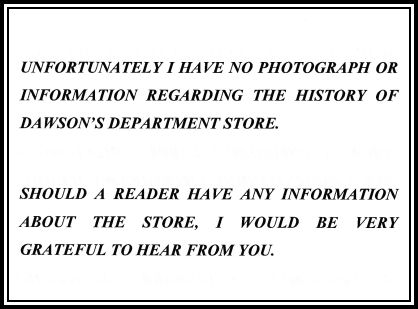 |
| |
Before working people had bank accounts and cheque books, and long before there were such things as credit cards, affordable credit for basic goods was extended to working people by Provident Financial. When I was a child, a large percentage of the working population lacked the necessary finance to afford many of the commodities that are taken for granted today. Such people were in no position to buy new clothes for either themselves or their children or furniture without borrowing the money. In those days, the ways that working class people could borrow money at a reasonable rate was limited. Options open to them including pawning an object of value, which could be retrieved within a certain time period for the amount of the original loan plus some interest, going to unscrupulous people who charged an excessive amount of interest or going to the Provident Financial. |
| |
 |
The Grip of Too Much Debt & The Possible Result |
| |
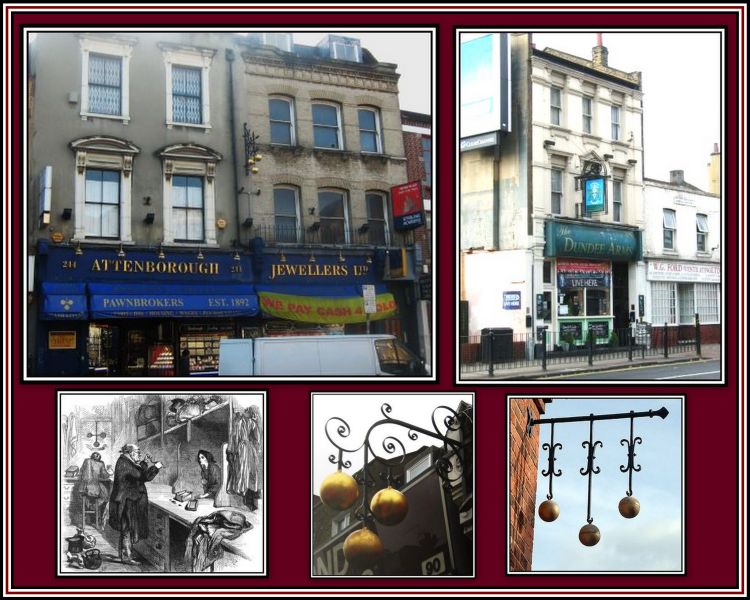 |
| Top row: left, Attenborough's Pawnshop, Bethnal Green Road; right, The Dundee Arms; this building was a pawnshop when I was a child |
| |
| The Provident Financial or The Provident, as it was popularly known, was an organization originally set up in Bradford by Joshua Kelley Waddilove in 1880. He was an insurance agent and while visiting the homes of his clients became painfully aware of the enormous difficulties that many working people had buying essential goods. Realizing that such a situation was not in the best interest of anyone, he developed a system that allowed affordable credit to working families in Yorkshire. Through the exchange of vouchers for goods, families were able to obtain clothing, furniture, food and coal in advance of payment. The sum advanced was repaid by affordable weekly instalments. |
| |
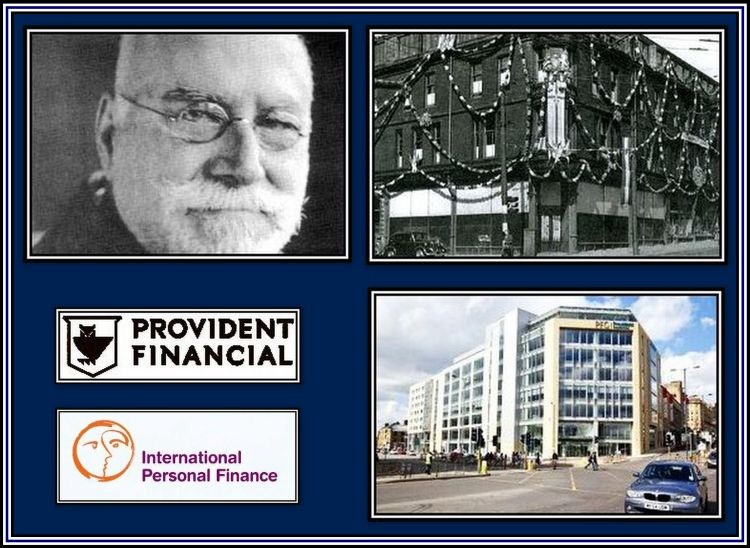 |
The Provident Clothing & Supply Company, which grew to be the Provident Financial Group (PFG).
Top row: left, Joshua Kelley Waddilove, founder; right, original head office in Bradford
Bottom row: right, Provident Financial Group, head office, Bradford |
| |
The company was an immediate success and was instantly popular with many working class people in West Yorkshire. As demand for his brand of affordable credit grew, Mr. Waddilove moved his operation into an office and recruited agents to help collect repayments. The company soon was operating throughout the country and today, the Provident Financial Group, continues to operate on these principles.
Immediately from its onset, The Provident suffered much criticism, mostly from those who were against consumer credit and the interest payable on doorstep credit. Despite this, the company flourished, and in 1992 became listed on the London Stock Exchange. In 1997, the company opened offices in Poland and the Czech Republic and later in other countries of the old Soviet Block and Mexico. In 2007, the company’s international holdings split from the parent company to form International Personal Finance, allowing the Provident Financial Group (PFG) to concentrate on activities in the United Kingdom.
When I was still a small child, I remember the tally man coming to our home. The agents of the The Provident were commonly known as tally men since they collected instalments on monies borrowed and noted each payment and the date on a card that was kept safely by the borrower and which was a record and receipt of the transaction. The agent would also tally the new total owed and write it in a column on the right-hand side of the card. The card was kept in a safe place by the borrower and was their record and receipt of the transaction. My mother kept her card with all her other important papers in a wooden box that a man had made for her as a wedding present and which I still have and use. |
| |
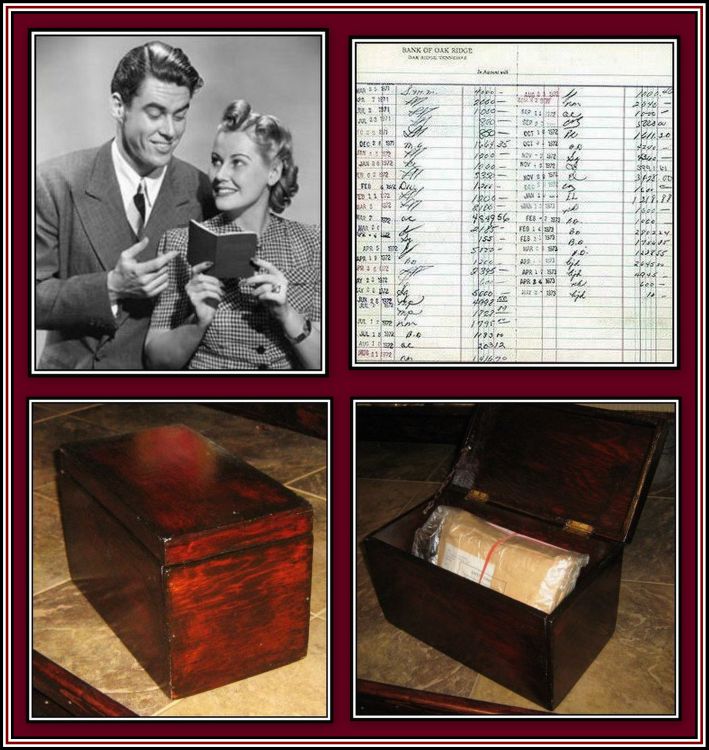 |
The Tally Man, Payment Book & The Box |
| |
| I remember our tally man. He was probably in his sixties and was a kind and gentle person who would always drink a cup-of-tea with my mother when he called. Occasionally he brought me some sweets and always remembered to ask me how I was. He was liked as much as the insurance man who called every other Friday evening to collect the monies for the various life insurances that people used to carry. I remember when our tally man retired. It was a sad occasion. He brought his replacement with him, a young man, who was a wide boy with too much to say for himself. I never liked him, but more importantly, my mother did not like him. She did not like his little jokes or his familiarity and soon after he took over she gave up getting The Provident. I was overjoyed when my mother ended her relationship with The Provident, as it meant that I did not have to go to Dawson’s again. |
| |
 |
Top row: Tally men
Bottom row: Insurance agents |
| |
Going to Dawson’s was perhaps the second most miserable experience of my childhood, only being slightly less gruesome than going to visit my grandmother.
I remember that we would take a 653 Trolleybus from the Mile End Gate at Cambridge Heath Road to the Hackney Road. Here we would get off and wait for a 555 Trolleybus and take it to Old Street Underground Station and the City Road. Although I loathed this journey, I hated having to get off the bus more. I honestly believe that it always rained when we went to Dawson’s and that the sky was never anything but overcast and grey. To be honest, I cannot be absolutely sure of this, perhaps it was just a reflection of my mood! |
| |
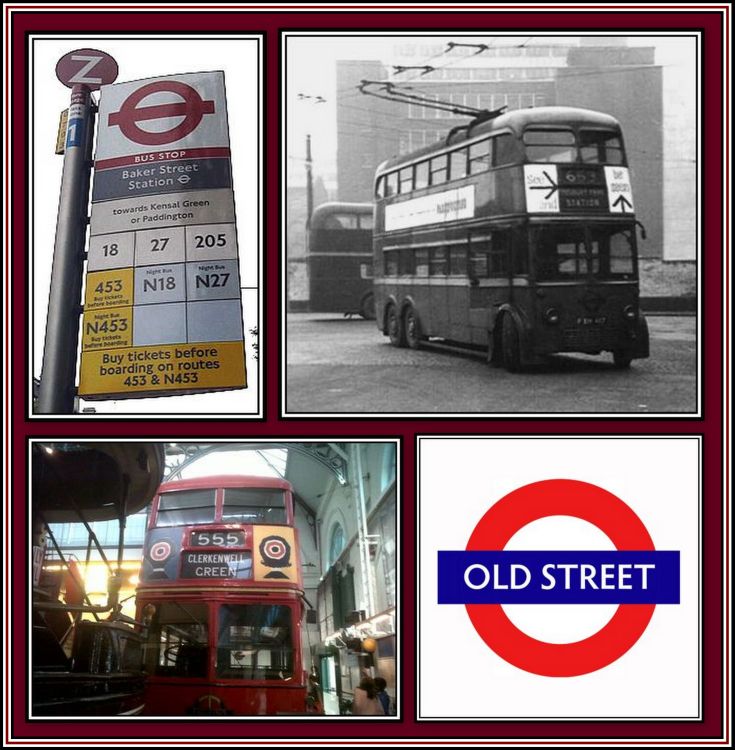 |
The Journey to Dawson's
The picture of the 653 Trolleybus is reproduced by permission of Geoff Bannister |
| |
| Anyway, once we got off the bus, we crossed Old Street and began our walk along the City Road towards Dawson’s! The stores seemed to loom up high before me. As I said, it always looked like a huge beast seating there just waiting to swallow me up. I remember I used to show my displeasure regarding our outing by stamping along the road or else dragging my feet, all much to the annoyance of my mother. She liked the store and looked forward to going there, something I never understood. |
| |
 |
Dawson's Department Store Never Looked Like These Stores |
| |
We entered the main door and I swear that one had to wait a minute or so to adjust to the light, or rather, the lack of light, for Dawson’s was perhaps the gloomiest store that I have ever had the misfortune to visit. To say that Dawson’s was dreary was an extreme understatement. I have visited Funeral Homes that were a lot more fun and better lit than this place. The décor was in basic beige without any obvious attempt to brighten it up and present a cheerful appearance. The floor was of dark brown slatted wood and was very noisy to walk on. I never remember the place being overly crowded, but there were always enough shoppers to impede my route as you will learn. |
| |
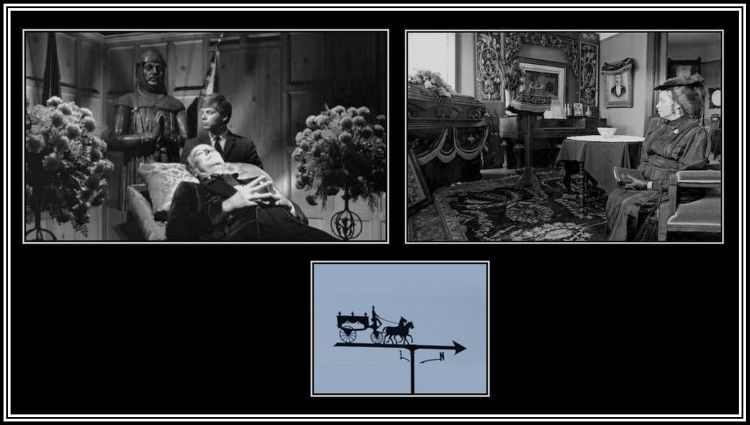 |
| |
I hate to criticize my mother, but when I was young shopping with her could be both a chore and dangerous. Not exaggerate the point, but it could be one of the most painful things imaginable. Whenever we went into a department store, my mother would insist on holding on to me, as she was fearful that I would get lost. This perhaps was a possibility and so I could understand her insistence that I remain close to her, but what I failed to understand was her manner of manipulating our way through the crowds.
I have never been able to explain my mother’s behaviour in a store, and for her part, throughout her life she denied my assessment of the situation and would accused me of exaggeration. In her younger days, my mother was not one to doddle through department stores such as Dawson’s, as she generally knew what she wanted and where to go to find it. As we made our way through the store, my mother would look to pass slower moving shoppers. Whenever she saw an opening between fellow customers where she assumed we could pass through, she quickly made a bee-line for it. This should not have been a problem were it not for her misjudgment of the actual size of the gap. Generally, the openings that caught my mother’s eye were of a size that was perfect for one to slip through, but not for one and me! As a result, once we speeded up our walk in order to take advantage of the opening, we would quickly arrive at the space and my mother would easily slip through and glide her way onwards to where she wanted. However my passage through the opening always proved to be a different matter.
As I said, the gap was never wide enough for both my mother and me to pass through since she insisted on keeping me at her side. While she was able to slip through the space unimpeded, I was less lucky and found myself being thrust into an on-coming customer. Being smaller and lighter, I obviously came off the worst for this encounter. Inevitably I would bounce against a grumpy gentleman or an overweight lady and naturally they blamed me for this clash. Following my encounter with such a fellow customer or their packages, I might be given an additional not-so-friendly shove and sent flying off in a direction behind my mother. This would pull my mother’s arm behind her, which instinctively caused her to snap me back to her side. Her reaction now caused me to be sent on yet another collision course with another oncoming customer who merely was hoping to slip through the space recently vacated by my mother. Eventually after ricocheting about my mother and careering into various innocents, I would be jerked back and returned to my position alongside her. While I attempted to regain my composure, my mother would have the temerity to accuse me of playing around and told me to behave properly and stop showing her up! |
| |
 |
Copyright: King Features Syndicate. Reproduced with permission - Torstar Syndication Services
I would like to extend grateful thanks to Ms Joanne MacDonald for help in this matter. |
| |
| Whenever my mother came to Dawson’s, she always came to buy the most boring of things: underwear for my father and me, shirts and work clothes for my father and various other garments far too depressing to mention. Even as a child, I could see that the garments on sale were hardly stylish and a la mode. Dawson’s was the kind of store where old ladies went to buy thick dark brown stockings and dark blue tie-up sensible shoes once thought appropriate for their age. Men’s fashions were as old fashioned. Dull looking suits and dreadful looking raincoats were their best sales. My father, being a stylish man, refused to wear anything bought at Dawson’s that could be seen. He had his standards to maintain! |
| |
 |
| |
I fear that Dawson’s was one of the cheapest stores that I had ever visited. It wasn’t cheap in terms of its prices, far from it, as they were not equivalent to those offered by stall keepers in the many open air markets close to where we lived or in the shops along The Waste in Whitechapel. No, Dawson’s was cheap in that it did not have a large number of sales personnel. Sadly, this was a time before self service and the central checkout area. The store floors were packed with counters with one, or if you were lucky, two salesmen or women supposedly waiting to serve an eager customer. And so in order to actually buy something, one had to queue up at an individual counter and wait for the sales personal to be free. |
| |
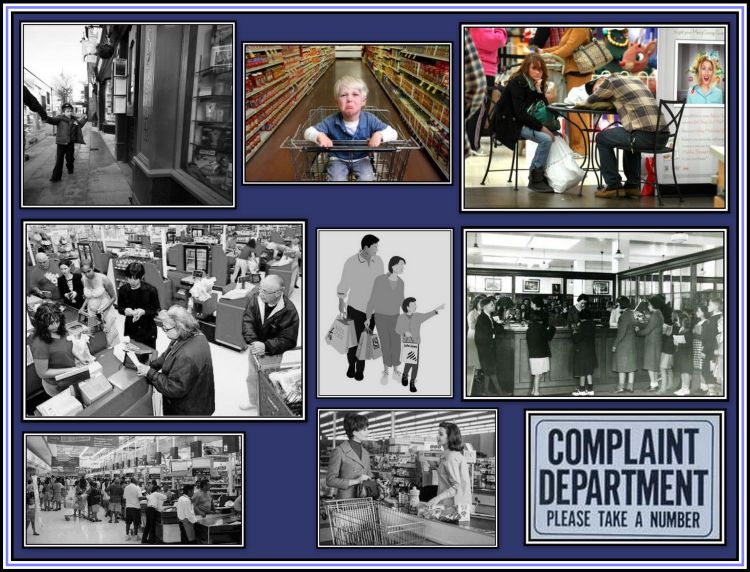 |
| |
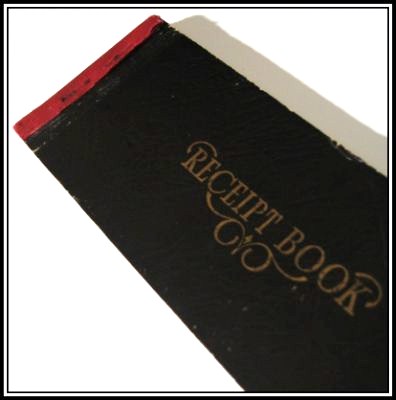 |
Waiting for a salesperson to be free and ready to attend to your wishes could take an age, as customers once at the front of the line forgot completely that others were waiting patiently behind them. Once given the undivided attention of the salesperson, the customer would pull and tug at various garments and insist on seeing every conceivable example of it that Dawson’s had on offer. Eventually, after much discussion, a decision was taken and a purchase made. Once a purchase was made, the salesperson would take an eternity to wrap it. Sadly, this was not the end of the transaction for we now had to suffer the payment ritual. This would begin with the salesperson finding their sales book and then ensuring that the necessary pieces of carbon paper were in place so that the numerous copies of the transaction could be recorded. Also, the sales person had to ensure that their hard board was inserted into the book so that the entry did not appear on the next set of pages. Now a pencil had to be found. Should the lead be broken, it would need to be sharpened, which would necessitate the finding of a sharpener. One needed the patience of Job to tolerate this ritual. |
 |
| |
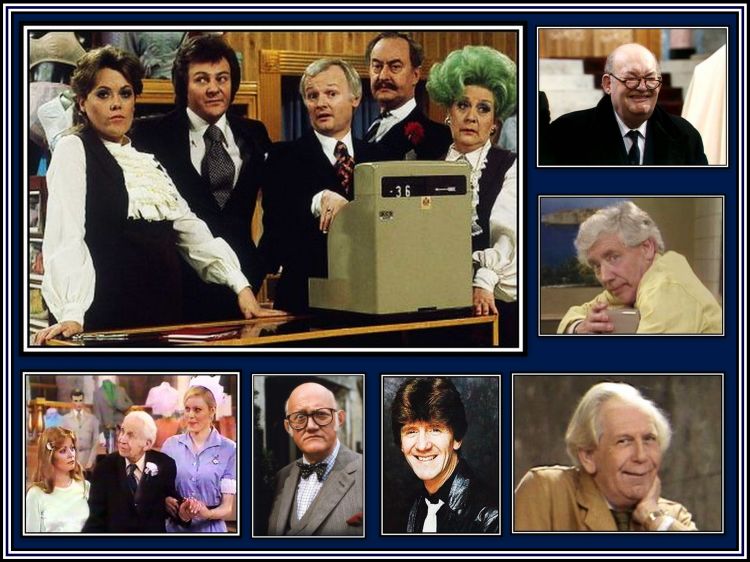 |
This was NOT the Staff at Dawson's Department Store
Click on the characters to see clips from the television programme. |
| |
| Now that all was in place, the salesperson wrote a detailed description of the transaction in their sales book. Upon completion the various sheets were ripped from the book and the customer’s copy exchanged for their Provident Cheque. The salesperson now entered the transaction details along with the date and cost on the cheque and a new tally was written in the appropriate place. Once the customer checked that the new tally was correct, the salesperson would thank the him or her for their patronage and a few minutes of chat would pass between them during which time I would have to stifle a scream! Now, before turning to the next customer, the salesperson embarked on the refolding of refused garments, which were then returned to their correct drawer, shelf or cupboard. I was exhausted just watching this. Sadly, this spectacle had to be repeated several times before it was our turn to be helped. I was always amazed how my mother was able to tolerate waiting. When I asked her how she managed it, she told me that she was used to waiting, as this is what she and others had to do during the war years when they lined up for various provisions. |
| |
 |
Screaming
Click on the photographs to see film clips. |
| |
| Occasionally my mother would purchase a jumper, sweater or pullover for me. I would dread this, as it would mean that I would be forced to try every garment on found by the salesperson before any decision could be made. I had learned to dress myself without help at a young age. However, whenever we went to Dawson’s, it would be as if a spell fell on my mother, as she seemed to totally forget this and would grab me and force a garment over my head and then tug it into place with great vigour. Again, I hate to criticize my mother, but she was not always an overly gentle woman. My father was the total opposite. As a very small child, I much preferred him to wash my face rather than my mother. He had a delicate touch and would dry my ears with great care so as not to hurt me. Unfortunately, I can only describe my mother as rough! She was not a brutal person and was upset whenever I told her that she was less than gentle. However, she would grab hold of me and wipe my face and towel dry it with tremendous vim and vigour while insisting that she was being gentle should I complain. I remember my mother washing my father’s hair on one occasion. He greeted her roughness with much complaint and told her that she was spiteful. I suspect now that she was indeed being unnecessarily rough to him, but I think that this was her way of seeking revenge for the many cruel things that he had done to her during their married life! |
| |
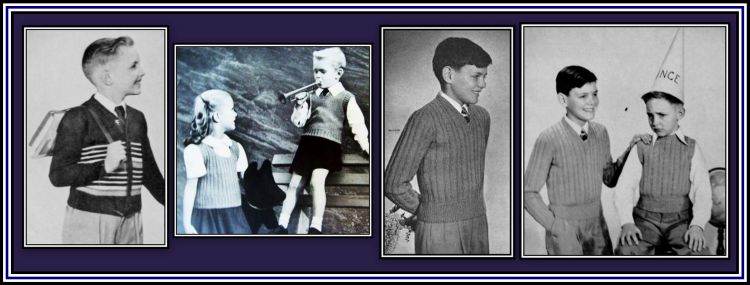 |
|
| |
Anyway, jumpers, sweaters and pullovers were dragged over my head and then dragged back off. My head would reel from these encounters and my hair would end up in a tussled mess. Besides this, I would find myself being pushed from side to side, as my mother wished to view me in the garments from all sides. As bad as this was, I think that the buying of shoes was the worst! Here, I was expected to march up and down an unimaginable number of times until my mother was convinced that the shoes neither slipped nor pinched. Without question, my mother would tell me every time to lift my feet up as I walked and, of course, to hold my shoulders back. Try as I might, I was never able to lift my feet as high as she wished or pull my shoulders back far enough to please her. Luckily, I held no grudges!
While this fashion show was going on, the saleslady (it was always a saleslady when it came to children’s garments at Dawson’s) would be giving her comments on how I looked, which my mother would delight in and encourage. These women seemed to enjoy seeing children being dressed and undressed in public and always seemed to encourage my mother to go through the whole gamut of goods available at Dawson’s. |
| |
 |
On the runway - three great designers whose creations never appeared at Dawson's Department Store
Top row: right, Christian Dior; centre, Coco Chanel; left, Yves St. Laurent
Bottom row: The 2011 Chanel Collection |
| |
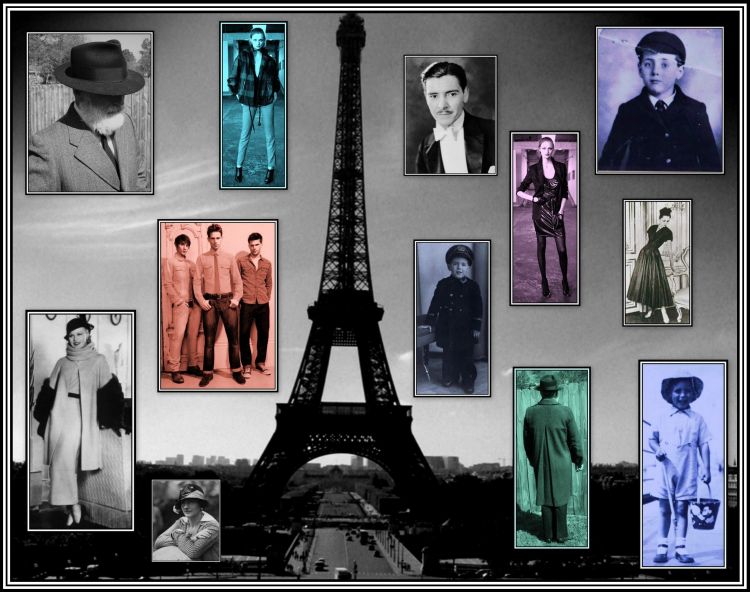 |
| On the runway, 1947-2010 |
| |
As we made our way through the various floors and warrens that consisted of Dawson’s, I would find myself being given packages to carry. Naturally this did not help me squeeze through the spaces that my mother sent me hurtling toward. Upon reflection now, I suspect that Dawson’s did not inhabit the whole of the building when it first opened. I suspect that as the company grew, it took over other establishments sharing the building. I say this since as one walked the length of a floor, often one had to go down a few steps to continue one’s investigation of the floor. There were also all kinds of twists and turns between various parts of a floor, which meant an increase in the number of collisions between me and others.
Perhaps the most horrific thing about Dawson’s was its lifts. Taking the stairs was not an option in those days. Stairs at Dawson’s were Fire Escapes and were wooden and rickety. The lifts were old, very old. I suspect that they were those originally installed. Each lift was attended by an operator. Each operator was very small and old, very old. Many sat on a little seat alongside the control panel and I noticed that the feet of many did not touch the ground. The operator set the lift in motion by movement of a lever, which caused the lift to either rise or fall at the speed of molasses. I can never remember the left coming to a halt so that the lift floor and the department store floor were ever exactly in line. The difference was often sufficient to cause a customer to trip and even fall, sending them and their packages sprawling either into the lift or else out into the store, causing more collisions with innocent customers. |
| |
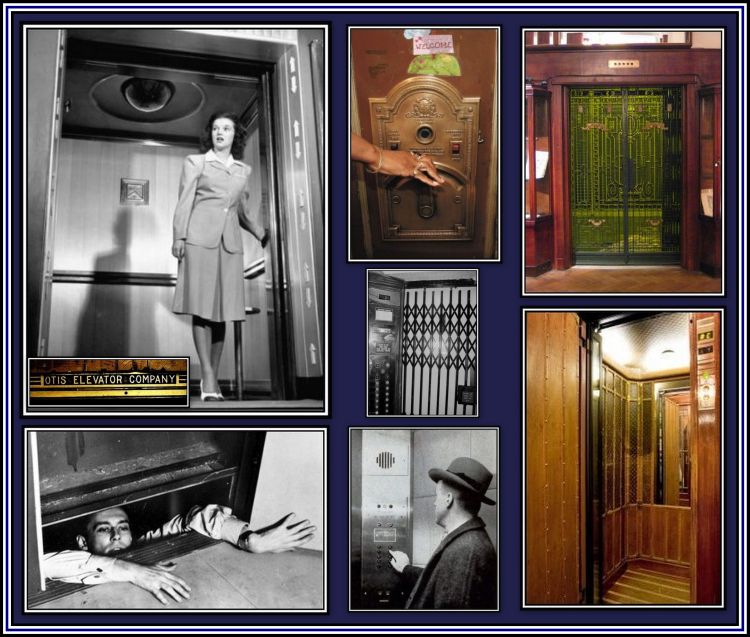 |
| |
The lifts creaked as they moved. I was always convinced that we were going to crash to the ground at any moment. I never dared say this to my mother since she was frightened by such things and each time she went into a lift, she believed herself brave. The gates of the lift were huge and heavy and I was amazed that the lift operators, who as I said were all aged, were able to manipulate them. However, they always managed to send the gates crashing along their rollers. Upon arrival at the next floor, the operator would inform us what was available for us to buy there. The only floor I enjoyed arriving at was the ground floor for from here one could find the exit.
The worst floor in Dawson’s without question was the basement. Here, food was sold. My mother would only rarely buy food with her cheque. However, whenever she had only a small sum left, she would drag me down into the bowels of the store and we would join a huge queue to buy something that she could get better closer to home. I remember that everything on the food counter had to be sliced, chopped or cut before your eyes since this was an age before pre-packaged goods. On the counter for everyone to supposedly salivate over was a huge cooked ham covered with breadcrumbs sitting on a porcelain stand. The ham was always very fatty and looked decidedly unappetizing to me. Lumps of cheese sat under huge glass domes and looked remarkably dry to me. I cannot remember exactly what my mother bought here, but it wasn’t ham and it wasn’t cheese. |
| |
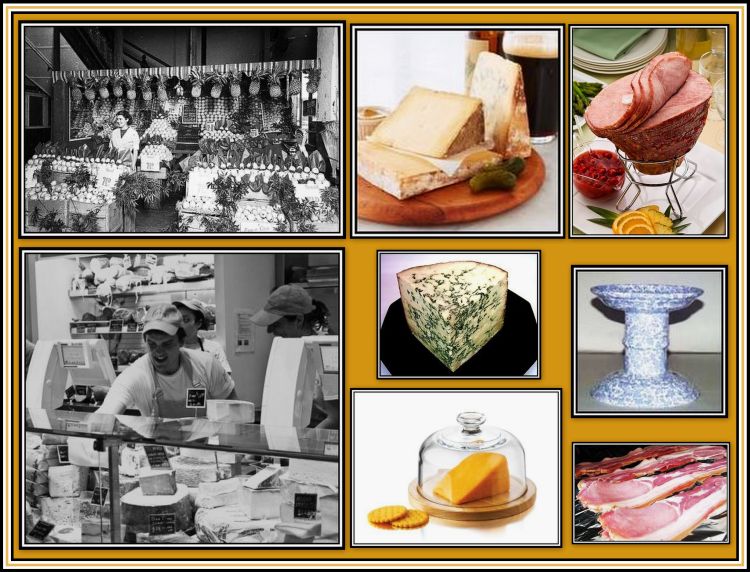 |
| |
| Eventually my mother would decide that we had enough of Dawson’s and I would be dragged towards the exit. I had long since been ready to leave, and although I was very tired, I managed to perk up when I learned that my ordeal would soon be over. Dawson’s was always remarkably hot inside and it was a pleasure to push open the door to the outside and feel the cool air on your face. Inevitably it would still be raining and night would have just fallen. Somehow I managed to walk to the bus stop and join yet another queue. The trolleybuses were always full and I would either have to stand or else sit on my mother’s lap. I was amazed that she was able to achieve this, but somehow she managed to arrange our boring packages about us and still have room for me on her lap. |
| |
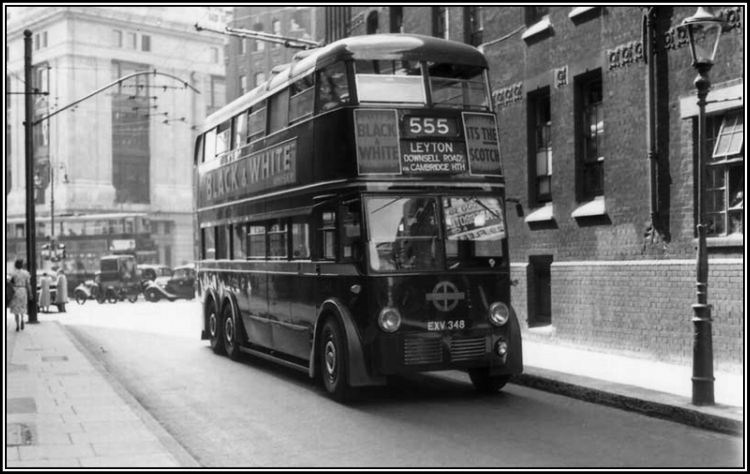 |
The 555 Trolley Bus
Grateful thanks are extended to the Omnibus Society and to its Photo Archivist, Alan Oxley, for allowing the reproduction of this photograph. |
| |
Once home, my ordeal was renewed as I had to model whatever it was that had been purchased for me. My father would pretend interest, but was too busy looking at what had been bought for him to care too much about how I looked. Naturally, I had no interest in his stuff.
Once we left London, I not only never visited Dawson’s again, but never saw the building either. I remember hearing that it had been demolished sometime in the late 1950s or early 1960s. I felt no loss at the news. Dawson’s, its staff and its lifts still held less than pleasant memories for me.
As I said, during my visit to London, I decided to go and look at the site where Dawson’s once stood. As I walked along the City Road, I remember feeling a little nostalgic and began to recall my visits there. After a minute or two, any happy nostalgic thoughts had evaporated, as all of my memories of shopping there were never happy. |
| |
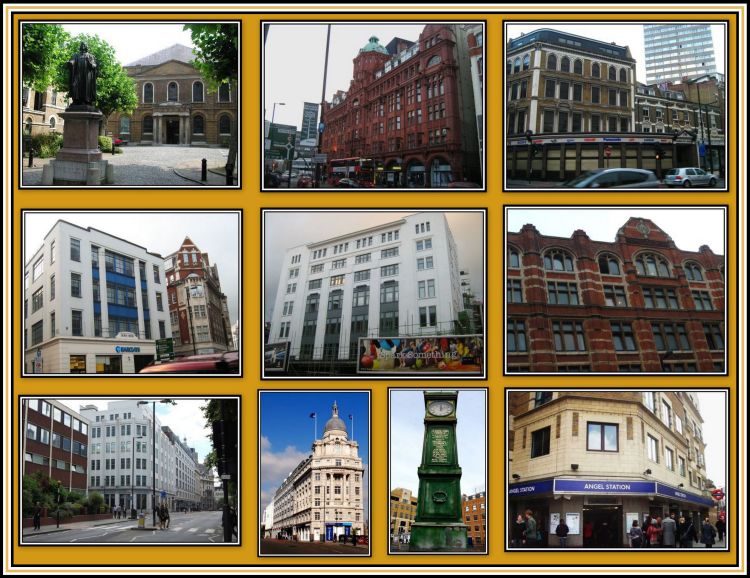 |
The City Road, Islington - buildings old and recent
Click on the top row to hear Pop! goes the weasel |
| |
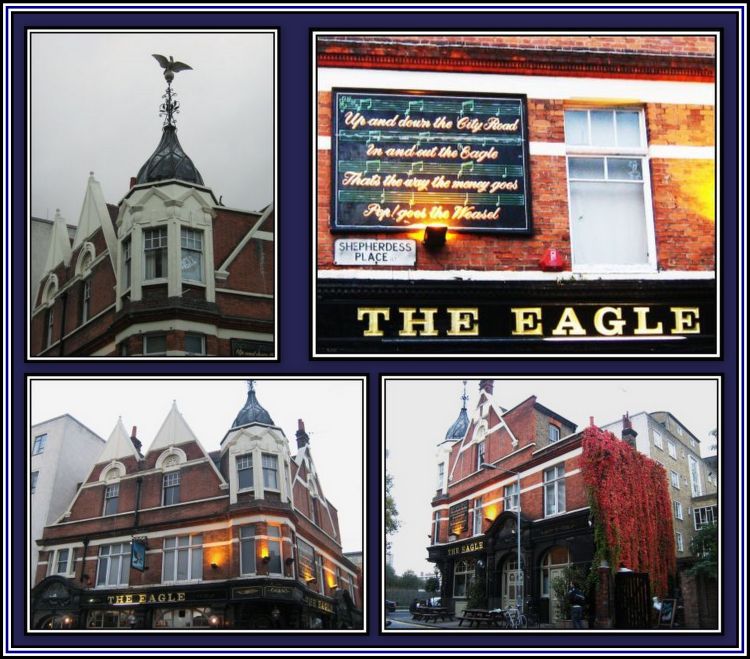 |
The Eagle Public House on Shepherdess Walk, a few steps from the City Road
Click on the collage to hear another version of Pop! goes the weasel |
| |
| As I got nearer to where Dawson’s used to be, I noticed that the road system was not quite as I remembered it. As a result, I found finding the exact site of the department store to be a problem. |
| |
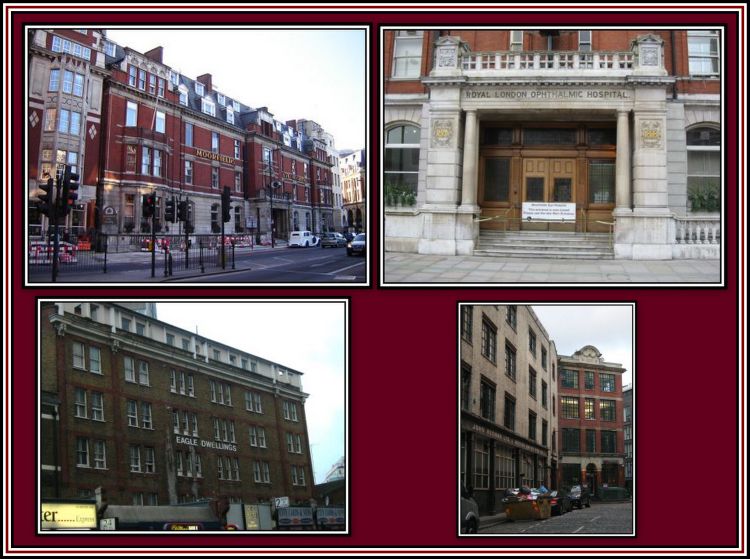 |
On the other side of the City Road just a few yards from where Dawson's Department Store once stood
Top row: Moorfields, the Royal London Ophthalmic Hospital
Bottom row: left, The Eagle Dwellings; right, offices & warehouse |
| |
Often when a building is demolished, the local borough council takes the opportunity to make certain changes to the road system about it. I suspected that this was the case here. As I looked at the area, I was not altogether sure if the store had been on one particular corner or else on another some thirty or so yards further along the City Road. I decided to ask a passerby if he knew where the store had been. I was surprised when he looked at me strangely and then gave me a wide circle and hurried off. I was not happy at his response and thought him rude. I thought that he could have at least apologized for not knowing exactly where the store had been. I most certainly would have behaved in this manner. I next asked another passerby if they knew where the store had stood and got the same response. I asked several others too, but my question brought only the same type of response. I remember thinking that there must be something wrong with the people that now lived in this area.
I am not one to give up when I am on a quest and decided to give those passersby the benefit of the doubt and allowed myself to believe that since they did not know where the store had been, they were too embarrassed to tell me and so ran off. |
| |
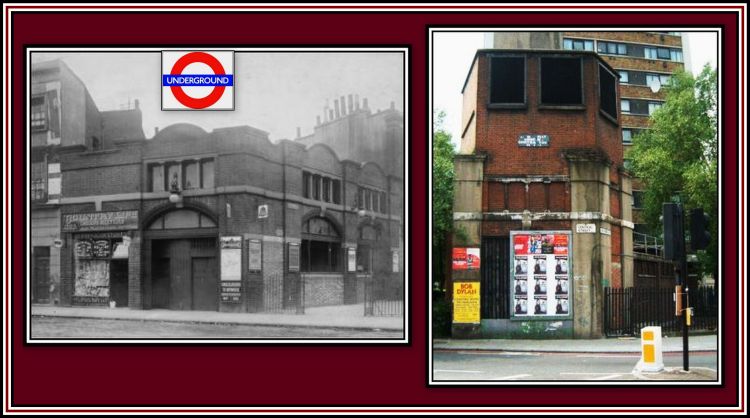 |
A little further along the City Road at the junction with Central Street
once stood the City Road Underground Station, opened 1901 and closed 1922
Left: past view of the station; right: its remains today |
| |
After some thought, I decided that I had perhaps not chosen my passers-by wisely. They had been young. Sadly, today’s young people do not always value good manners. Perhaps I would have more success were I to ask a passer-by who was nearer to my own age. After a minute or two, an old man came walking down the street. Here, I thought, would be someone who might be able to help me. I stopped him and asked if he knew exactly where the Dawson’s Department Store had once stood. He too looked at me with that strange look. By now, I began to wonder if I had just arrived from Mars or perhaps I had sprouted a second head! However instead of running off and thinking me mad, the old man remained still and then asked me if I knew when the building had been demolished. I said that I believed that it was demolished sometime in the late 1950s. I remember that this caused him to laugh out loud. Actually, he almost choked himself, since he was laughing loudly and heartily. I was quite embarrassed as other youthful passers-by were now averting their eyes from us.
Once the old man gained control of himself, he told me that the building had been demolished almost sixty years ago and that it was not surprising that no one remembered it!!! At that, he began to laugh again and, as he did, he shook his head and continued on his way. And he was still laughing as he disappeared into the distance. |
| |
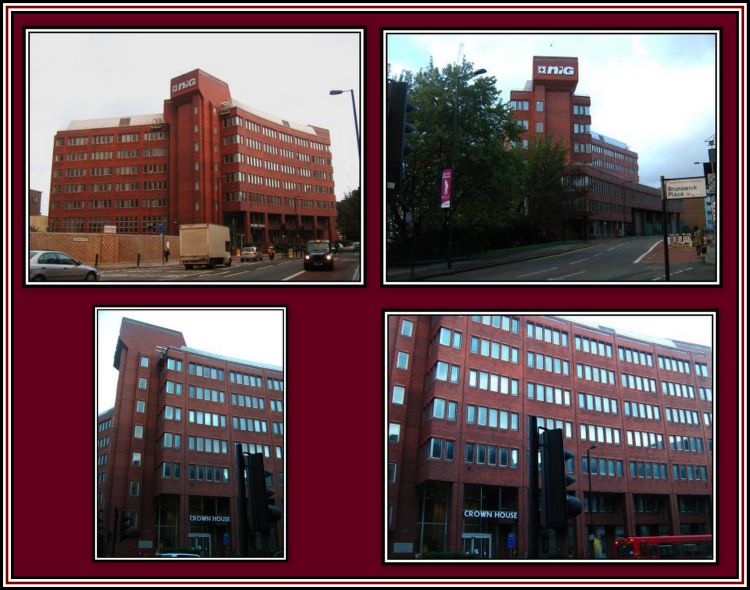 |
Crown House, 145 City Road, now occupies the site where Dawson's Department Store once stood.
The building is occupied by The National Insurance and Guarantee Corporation Limited (NIG),
which is part of The Royal Bank of Scotland Group.
The reader will note the slight sweep to the building, which although slight, is reminiscent of Dawson's. |
| |
It was at that precise moment that I realized that I was probably one of the few still living who actually remembered Dawson’s. The old department store was like an old cumbersome dinosaur and was now dead and buried, and worse yet, forgotten. Sadly, unlike an extinct species, Dawson’s left no remains. There were no bones, no fossils, for a latter day archaeologist to find. Dawson’s had not merited a plaque to remind later generations of its presence. Time had crept by without my actually noticing. We notice when Christmas is on the horizon. We notice when it arrives and when it is gone. Alas, we do not always notice the insidious passage of time. People and places have the habit of being forgotten as we become busy living our lives and they pass into our memory where they may lay dormant for years. And before we know it, years have slipped by before something happens to remind us of such people and places.
And then, quite suddenly while I watched that old man disappearing in the distance, I realized that fifty years of my life had gone by and that I was now very much older than the people that were passing me by on the City Road. Why, I was even older than that old man! |
|
| I 'remember' Dawson's. Alas I don't have any details of the place. My memories may have the inaccuracies of time passed by, but I do have a strong image of the department store in City Road almost opposite Moorfields Eye Hospital. The road behind it met City Road at an angle producing a 'pointed ' building of about 5 or 6 stories. Close by was the head office of Liptons where a neighbour of ours worked and she often went in the store. I seem to remember it was regarded as a bit superior to other shops in the area.
Brian Walker
We had a store like Dawson's at Sutton, by name of Shinners (long gone now). When you paid for your purchase, your money used to be put into a canister and whizzed off to the cash office via a complicated network of pneumatic tubes and overhead tracks. Minutes later it would clack its way back to the counter, complete with change. Endlessly fascinating to a youngster like me.
Steve |
| |
|
In order to find out some information about Dawson’s Department Store, I wrote to various libraries and archives in London to see if they were able to shed any light on when it was built, who owned it and when it was demolished. Sadly, many wanted to be helpful, but were unable; some were unhelpful; but one went that extra mile and proved to be very helpful.
Here is a message from Mr. Ed Lyon, Archive Assistant, at the Hackney Archives Department, who has shed light on the mystery of Dawson’s. Incidentally, the Hackney Archives is open to the public, but at present it is in the process moving to a new home in Dalston. Meanwhile the archives’ website is available for viewing at http://www.hackney.gov.uk/ca-archives.htm. I am told that their new address will appear there once the new building is open.
Here is Mr. Lyon’s message:
Thank you for your enquiry. To answer it I consulted our image database, checked our subject catalogue and searched our catalogue. I also looked in David Mander's More light, more power: an illustrated history of Shoreditch and a range of Post Office London directories, spanning 1877 to 1901.
We have several pictures of Dawson's Department Store in our possession (which he describes).
It was clear from the captions on the pictures that Dawson's ceased trading around the summer of 1980. There was no real information in David Mander's book, save a pointer to the water colour picture of the store from 1902. The Post Office directories showed that Dawson's was trading from the same location at least as far back as 1877. We will probably have drainage plans for the site, but I do not believe this would provide you with much more information than you currently possess, although they will provide at least basic plans of the building and the date of erection.
Ed Lyon, Archive Assistant
Mr. Lyon also sent a follow-up email, which gives some additional information on the building.
Here is Mr. Lyon’s second message:
There seem to have been at least two Dawson's buildings on the site at the junction of East Road and City Road. The 1902 picture depicts a different building from that which occupied the site later on. I had a look at some Ordnance Survey Maps and the building you recall was built at some point after 1915 and looks like an interwar construction to me. I checked the London County Council Bomb Damage Maps, which indicate no damage during the war.
Ed Lyon
It is nice to know that the original store was probably built in 1877 or thereabouts and that some changes occurred to it throughout the years and that it continued to operate until 1980. Although I am grateful to learn these facts, I have decided against reproducing any pictures of the store.
Why is this, you may ask? This website deals with my memories, whether true or false. I have a clear view of the store in my mind, which perhaps does not reflect reality, but I would like to remember it as I believe it was. I think that, in this case, it is better to maintain the mystery that surrounds the store in my memory and delve no further. For those of you who would like to know what Dawson’s was really like, I am sure that a visit to the Hackney Archives will allow all curiosity to be satisfied. |
| |
|